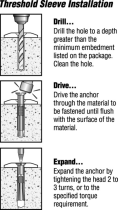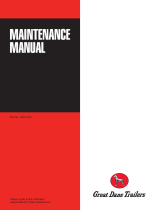BENDIX SD-22-3260 User manual
- Category
- Welding System
- Type
- User manual
This manual is also suitable for
BENDIX SD-22-3260 is a mechanically actuated brake with a fixed position cam and anchors. It is designed for use on heavy duty highway vehicles. The force of the actuator is converted from a linear force to a rotary torque. This torque is transferred to the cam shaft of the foundation brake, which lifts the cam rollers, spreading the brake shoe ends apart and pivoting the shoes about the anchor pin so that the lining comes into contact with the rotating brake drum.
BENDIX SD-22-3260 is a mechanically actuated brake with a fixed position cam and anchors. It is designed for use on heavy duty highway vehicles. The force of the actuator is converted from a linear force to a rotary torque. This torque is transferred to the cam shaft of the foundation brake, which lifts the cam rollers, spreading the brake shoe ends apart and pivoting the shoes about the anchor pin so that the lining comes into contact with the rotating brake drum.












-
 1
1
-
 2
2
-
 3
3
-
 4
4
-
 5
5
-
 6
6
-
 7
7
-
 8
8
-
 9
9
-
 10
10
-
 11
11
-
 12
12
BENDIX SD-22-3260 User manual
- Category
- Welding System
- Type
- User manual
- This manual is also suitable for
BENDIX SD-22-3260 is a mechanically actuated brake with a fixed position cam and anchors. It is designed for use on heavy duty highway vehicles. The force of the actuator is converted from a linear force to a rotary torque. This torque is transferred to the cam shaft of the foundation brake, which lifts the cam rollers, spreading the brake shoe ends apart and pivoting the shoes about the anchor pin so that the lining comes into contact with the rotating brake drum.
Ask a question and I''ll find the answer in the document
Finding information in a document is now easier with AI
Related papers
Other documents
-
Gill 19.5" TAKE-OFF BOARD SYSTEM Operating instructions
-
Gill 8" TAKE-OFF BOARD SYSTEM Operating instructions
-
Gill ALUMINUM CIRCLE Operating instructions
-
 Red Head 50123 Installation guide
Red Head 50123 Installation guide
-
Regency TKB30RNDBE Operating instructions
-
Landoll 317D User manual
-
Landoll 330A User manual
-
 Great Dane 42101401 User manual
Great Dane 42101401 User manual
-
Polaris 2008 RZR User manual
-
Polaris 2010 Ranger RZR 800 EFI User manual













